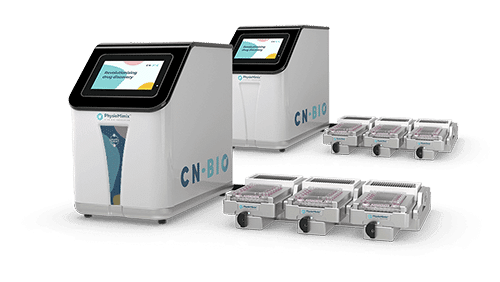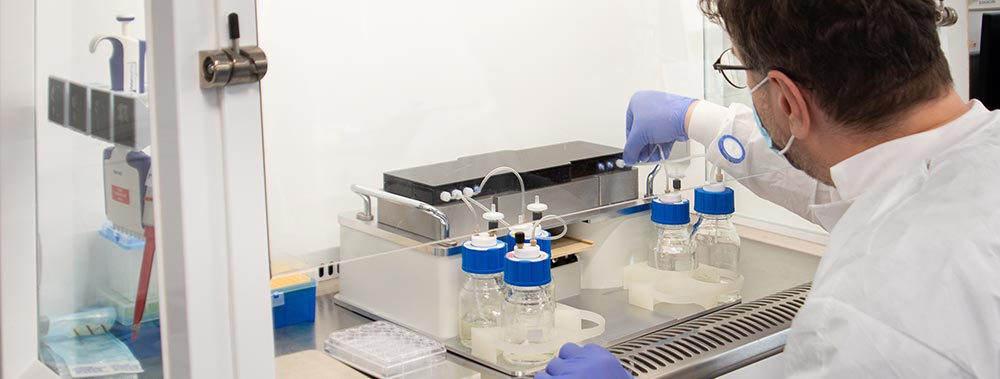Drug discovery should be simple. Deliver the right molecule, antibody, new modality, or cell to the right target within the right organ at the right concentration. Once you have ensured there are no unwanted effects elsewhere in the body, you have developed a safe and efficacious medicine. Of course, this completely trivialises the phenomenal scientific challenge of discovering new medicines, a process typically taking 10 years and consuming hundreds of millions of dollars.
Two of the biggest drug discovery challenges
The first drug discovery challenge requires biologists to identify the right target and confirm a disease-modifying effect. Drugs that bind to the target are subsequently identified and optimised using well-established, industry-proven techniques. Their efficacy and potential toxicity are monitored in vitro to identify the most promising candidates. From here, the next big question relates to drug delivery. Is the concentration of drug that reaches the right organ, or tissue, sufficient to induce the required effect on the target? To answer this question, we need to understand the drug’s pharmacokinetic (PK) and pharmacodynamic (PD) relationship.
Understanding PK/PD relationships
PK studies report the effects the body has on a drug, its absorption, distribution, metabolism and excretion. PD studies monitor the opposite, the effect the drug has on the body, namely what molecular pathways are changed. Understanding the relationship between the two is key to developing a successful drug. This may sound straightforward but it’s extremely challenging to predict. After a drug is administered its concentration in the bloodstream rises as it is absorbed and distributed, then falls as it is metabolised and excreted. The dynamic nature of this process means that the concentration of a drug at the target is a) difficult to estimate and b) continuously changing over time. The problem becomes even more complex for combination therapies, a cornerstone of cancer treatment where two, or more, drugs are administered together [1].
Researchers have traditionally used two methods to understand the relationship between drug concentration, its change over time and its effect on the target. Method one combines the results from simple lab experiments using constant concentrations with computational (in silico) models. The second method is in vivo animal experimentation. Both are informative, but a significant and somewhat unexpected gap remains. It is not possible to recreate the human or animal PK profiles in vitro and test the effect on cells.
Why’s it important to explore PK/PD relationships in vitro?
When there are already simple tests, computational models and animal studies available, why does it matter that we can’t explore human PK/PD relationships in vitro? Animal studies are slow and expensive, they present ethical concerns and frequently the PK profiles of animals differ significantly from those of humans. It is certainly faster and cheaper to combine simple tests with computational models, but these models fail to fully capture the complexity of disease biology and the human body. Can we even be sure that humans will respond in the way that the computational model predicts? Wouldn’t it be good to be able to test these predictions before reaching the clinic? I believe scientists are missing an important tool for studying the critical PK/PD relationship! Surely, by having an in vitro method to test the effects of PK, data-driven decisions can be made with more confidence?
Is there a missing tool in your toolbox?
The field of advanced in vitro assays has progressed rapidly over the past decade. We have observed the maturation of technologies, such as induced pluripotent stem cell-derived lineages, organoids, 3D cell culture and organ-on-a-chip systems. To create a richness of data these technologies can then all be linked to new analytical capabilities such as high content imagers, RNAseq and multiomics. Despite all this innovation, comparatively little attention has focussed on the question “how can we accurately control drug concentrations in these systems to match those in the human body?” Automated liquid handling systems can rapidly and accurately add drugs to cells, but this typically only occurs once per test and requires the cells to be removed from the incubator, disturbing their culture. The closest solutions are multi-well plates, or microfluidic chips, that create a concentration gradient across a set of cells, simple concentration decreases or systems [1], and which sequentially add different drugs to the same set of cells [2]. The latter has been used to determine the effects of chemotherapy combinations on patient-derived cancer organoids. These technologies are useful but limited.
Unlock new human relevant information through our new Oncology Service
Development of this missing tool for PK studies opens a new paradigm for drug discovery experiments. Researchers will no longer need to choose between lab experiments with static, unchanging drug concentrations and animal experiments. Instead, they can explore human PK/PD relationships in the lab, by applying changing drug concentrations that accurately reflect the in vivo scenario, to any cells they choose. This approach promises to unlock new human-relevant information that can potentially increase the speed and reduce the cost of drug discovery. Access the missing tool soon through our new Oncology Service.
Oncology Service
Explore drug pharmacokinetics, scheduling and combinations without xenografts
Learn more
References
1. Lohasz C, Frey O, Bonanini F, Renggli K, Hierlemann A. Tubing-Free Microfluidic Microtissue Culture System Featuring Gradual, in vivo-Like Substance Exposure Profiles. Front Bioeng Biotechnol. 2019 Apr 2;7:72. doi: 10.3389/fbioe.2019.00072. PMID: 31001529; PMCID: PMC6454105.
2. Schuster B, Junkin M, Kashaf SS, Romero-Calvo I, Kirby K, Matthews J, Weber CR, Rzhetsky A, White KP, Tay S. Automated microfluidic platform for dynamic and combinatorial drug screening of tumor organoids. Nat Commun. 2020 Oct 19;11(1):5271. doi: 10.1038/s41467-020-19058-4. PMID: 33077832; PMCID: PMC7573629.


